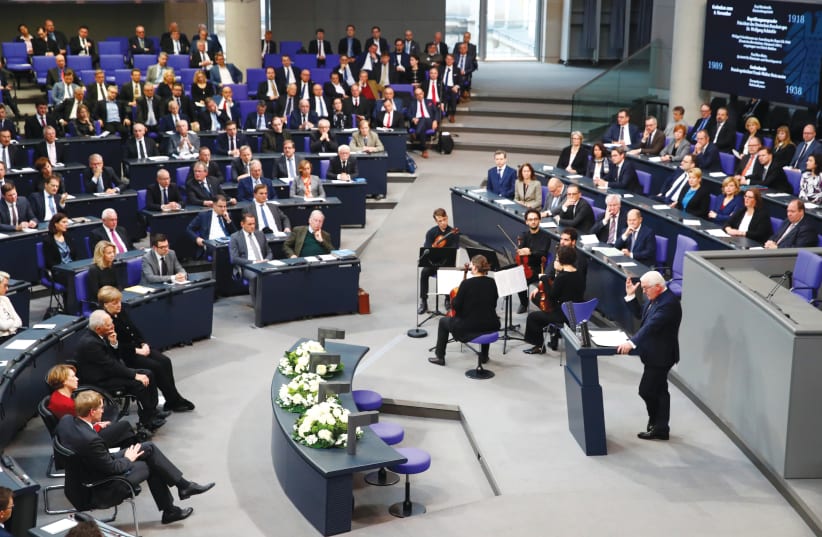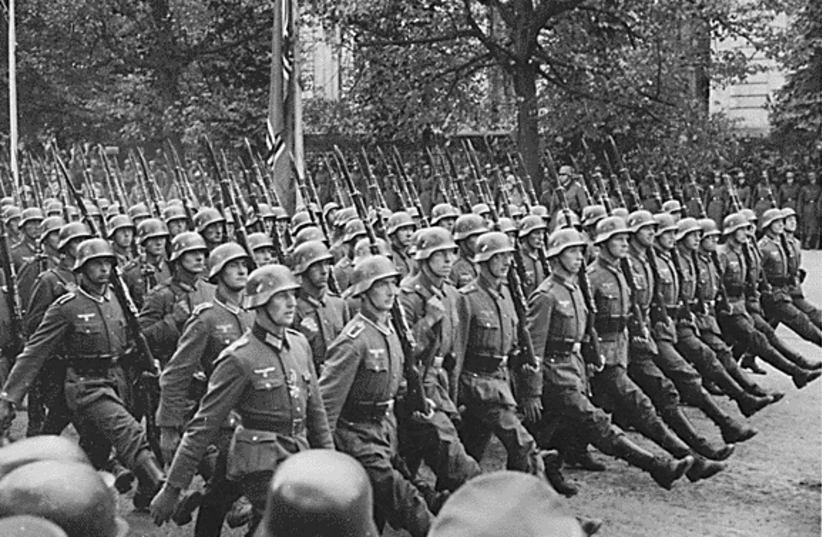At exactly 11:15 a.m. on Monday, January 30, 1933, representatives of the German political parties gathered in the Chancellery Building in Berlin to renounce the German republic. The Left, the Social Democrats and the Communists, were not invited, nor was the Catholic Centre Party.
The Right had decided to “hire” Hitler and thereby put him on a “legal” path as chancellor towards an authoritarian state. Engineered by press baron Alfred Hugenberg and unpopular former chancellor Franz von Papen, they believed that Hitler could be contained within a conservative coalition.
In his excellent Hitler’s First Hundred Days: When Germans Embraced the Third Reich (Basic Books), author Peter Fritzsche demonstrates in graphic detail and descriptive precision how the German Right opened the floodgates to hell.
Fritzsche points out that president Paul von Hindenburg had been elected in 1925 as a kaiser-like figure after the defeat in World War I, but in reality he was little more than “a figurehead of a newly energized nationalist movement.” Hindenburg, the Right and the Nazis all wanted an end to the democratic Weimar Republic and a recovery of national pride. It was a reflection of a growing, popular need for a volksgemeinschaft – a national community – which the Nazis relentlessly exploited during the Great Depression.
The Nazis enacted a permanent mobilization of supporters, which was demonstrated at rousing rallies, militant marches and the enjoyment of street violence. They never stopped campaigning. And it was effective – after all, the Nazi Party increased eightfold between 1929 and 1932.
Although 18,000 German Jews won the Iron Cross during World War I, they were accused of wielding the treasonous dagger that implemented “the stab in the back” – the unexpected military collapse in November 1918. The Right and the Nazis instead harked back to the spirit of August 1914 when the kaiser embarked on a patriotic war with Britain, France and Russia.
Many academics were sympathetic to reclaiming this reinvented past and student fraternities banned Jews. As Fritzsche, an American professor himself, writes: “the German University was not a bastion of free or critical thought.”
Yet nothing was inevitable about Hitler’s appointment – the Nazis had in fact lost support in the last election in November 1932.
Germans were tired of chaos, the lack of direction, division in the country and often lethal street confrontations between the Nazis and the Communists. Stalin ensured that German Communists did not cooperate with the Social Democrats in a united front against the Nazis.
By January 1933, a fatigued public simply wanted a resolution, regardless of how it was carried out, so that they could return to a semblance of normality. An empowered Hitler was henceforth allowed to crush any opposition by unleashing murderous forces onto the street under the very eyes of the police.
At the core of this sobering book by Fritzsche is the description of how ordinary people incrementally transformed themselves into ardent Nazis within 100 days. Why there was “a tidal wave of converts.” Why the burning of red flags became the burning of books on the 101st day. How the struggle was no longer between Left and Right, but between Nazis and anti-Nazis. How these 100 days became the trigger to ignite a demonic passion play in which the Jews played Satan. Fritzsche analyzes these fundamental questions.
In the run-up to the election in early March 1933, Hitler cultivated the public with beseeching God for the country’s deliverance and how he would make Germany great again, delivering it from the shame of its capitulation in 1918. Many churches were swept along with this tide – no one laughed at Hitler now. Clergy used German wine to celebrate the Eucharist and some thought of themselves as Jesus Christ’s stormtroopers.
The Nazis won 44% of the vote in the election. Together with another 8% from the Right, Hitler now had a majority to do as he wished. The Nazis garnered more votes in Berlin than the Communists and the Social Democrats together – so much for the slogan “Berlin stays Red!”
The Nazi victory opened up the way to opportunists and conformists, those who placed expediency above conviction. About 1.6 million people joined the Nazi Party between January 30 and May 1, 1933.
Everything had changed for Germany’s half a million Jews, now outsiders and rejects. Convivial antisemitism became embedded in the everyday language of ordinary conversation.
In particular, the author follows the odyssey of actor Heinrich George, who played Émile Zola in the film Dreyfus in 1931. Soon he was eagerly providing proof that his antecedents were good Aryans. In 1940, he acted in propaganda film Jud Süss and provided artistic succor throughout the war.
The Nazis argued that their national revolution had in effect “deleted” the legacy of the French Revolution. This meant erasing not only the European Enlightenment, but also the Jewish Enlightenment, the Haskala, which gave rise to Zionism.
The retelling of this painful story is carried out in a remarkable fashion in this work, based on diaries, archival research and personal testimony. The author attempts to explain how and why so many were sucked into Hitler’s maelstrom – a question that seeks answers from the heights of 2022.
Peter Fritzsche has conveyed this terrible warning from history in this accessible and exceptional book. Jews, of all peoples, will understand that the past never goes away, but is always reflected in the present.
Hitler’s First Hundred DaysBy Peter FritzscheBasic Books363 pages; $18.99

